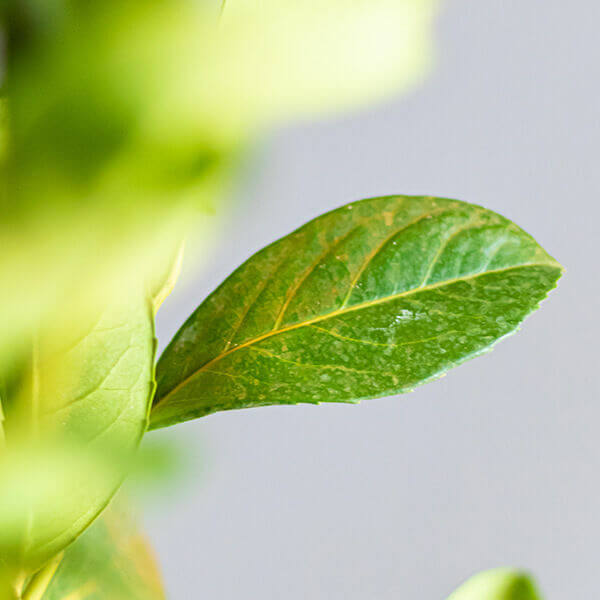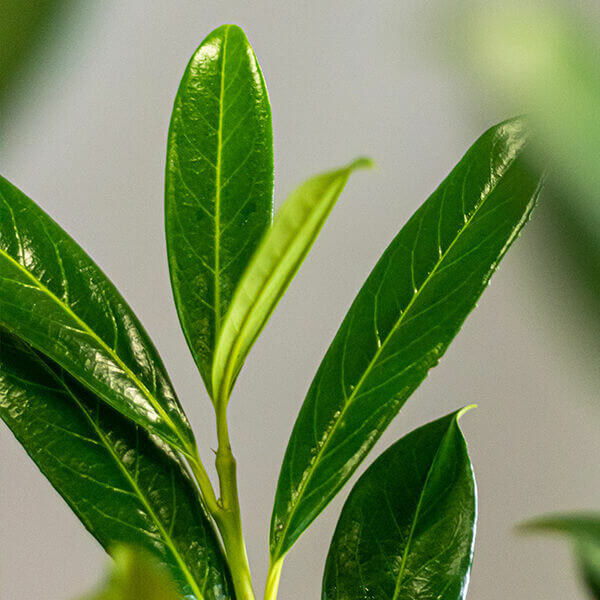Hedge Plants For Decorative Landscaping
Hedge Plants For Decorative Landscaping
Blog Article
Hedge Plants For Courtyard Gardens
Boost your garden's attraction with rich hedge varieties such as Yew (Taxus), Thuja, Laurel, Photinia, and Bamboo, celebrated for their structural stability and environmental advantages.
Yew and Thuja offer evergreen protection and winter durability, while Laurel provides rapid development and broad, aromatic leaves.
Photinia includes seasonal charm with its dynamic red foliage, and Bamboo provides a low-maintenance, serene ambiance.
These hedges enhance air quality, decrease noise, and produce tranquil, personal spaces.
Appropriate planting, spacing, and upkeep ensure vigorous growth and ecological consistency.
Check out how these lush varieties can elevate your garden's appeal and wellness.
Key Takeaways
Transform Your Garden With Lush Hedge Varieties
- Select Yew for its dense, evergreen development and unparalleled longevity.
- Select Laurel for its quick growth and broad leaves, ensuring quick privacy.
- Choose Photinia for its dynamic seasonal foliage, which turns a striking dark red.
- Use Bamboo for a low-maintenance, winter-hardy hedge with visual appeal.
- Space plants 2-3 per meter and prune routinely for ideal development and health.
Popular Hedge Plants
When changing a garden with rich hedge ranges, it's necessary to think about popular hedge plants such as Yew, Thuja, Laurel, and Photinia due to their unique characteristics and benefits.
Yew (Taxus) is highly esteemed for its longevity and dense, green growth, making it a prime option for enduring landscapes.
Thuja is noted for its evergreen foliage and robust winter strength.
Photinia includes seasonal vibrancy with red leaves that darken over time, creating vibrant visual appeal.
Laurel offers fast development and fragrant, broad leaves, ideal for fast personal privacy.
In Addition, Bamboo is an excellent choice for atmosphere, using a low-maintenance, winter-hardy alternative that boosts the garden's visual with its stylish, swaying canes.
These selections deal with a range of horticultural needs and choices.
Benefits of Garden Hedges
Garden hedges offer a multitude of advantages, making them a valuable addition to any landscape. These natural barriers are economical to implement and supply substantial wind security, enhancing air circulation and adding to noise decrease. The dense foliage of hedges like Thuja and Beech ensures privacy by obstructing visibility, developing a secluded and serene environment.
Hedges likewise play an important role in microclimate guideline, supplying a steady environment that promotes plant growth and lessens temperature variations. Their elaborate leaf structures filter toxins, improving air quality and adding to a healthier garden community.
Furthermore, hedges master noise decrease, absorbing and deflecting sound waves to lower ambient noise levels. This dual performance of providing both acoustic and visual privacy improves the overall serenity and visual appeal of any garden.
Planting and Maintenance Tips
For an effective hedge, careful preparation of the planting area is important. Ensure the soil has appropriate pH and drain to support strong root advancement.
Space the plants properly for the picked species. Water the hedge often throughout its preliminary growth stage, adjusting as required with seasonal changes.
Execute a organized pest control and disease avoidance method, utilizing organic or chemical treatments when needed. Frequently check for aphids, termites, and fungal infections.
Apply mulch to maintain wetness and suppress weeds. Seasonal pruning promotes dense development and air blood circulation, necessary for plant health.
Following these guidelines will help you cultivate a vibrant, well-kept hedge that improves the charm of your garden.
Spacing and Cutting Standards
Spacing and Cutting Standards
Correct spacing and cutting are vital for cultivating healthy, aesthetically appealing hedges. Adequate spacing ensures each plant receives sufficient nutrients, light, and air flow.
Follow these standards for optimum hedge upkeep:
- Spacing: Position hedge plants 2-3 plants per meter to motivate robust growth.
- Pruning Methods: Regular pruning is important for maintaining desired hedge height and shape. Cut brand-new development in summertime and cut back older wood during winter.
- Seasonal Care: Change cutting techniques and schedules according to seasonal requirements to ensure plant health.
- Hedge Height: Regularly display and cut to preserve the desired hedge height and attain consistent aesthetic appeals.
Complying with these actions will ensure your hedge flourishes, enhancing both the appeal and performance of your garden.
Selecting the Right Hedge
Choosing the Right Hedge
Picking the suitable hedge involves evaluating aspects such as fully grown height, foliage density, and environmental strength. Successful hedge plant selection needs understanding each types' growth characteristics and site-specific versatility.
For Browse this site instance, Yew (Taxus) provides excellent durability and dense development, while Thuja is noteworthy for its winter season durability. In addition, considering upkeep requirements is essential; fast-growing types like Laurel or Privet demand routine trimming, whereas low-maintenance alternatives like Bamboo or Ivy might be more effective for those seeking very little upkeep.
Ecological aspects such as soil type, light schedule, and moisture conditions need to also assist the selection process. This mindful approach guarantees the chosen hedges will prosper, providing both aesthetic and practical advantages to the garden landscape.
Delivery and Planting Recommendations
To guarantee your hedge plants flourish, they must be provided by specialized carriers and planted quickly upon arrival.
Follow these necessary steps for effective planting:
- Soil Preparation: Enhance the soil with natural matter to enhance drainage and nutrient content.
- Planting Depth: Produce a trench two times the width and equal to the depth of the root ball.
- Watering Methods: Water completely after planting, keeping the soil regularly wet but not saturated.
- Mulching: Apply a layer of mulch to keep wetness and reduce weeds.
Consumer Assistance and Service
Given the essential function of prompt help in horticultural pursuits, our consumer assistance group is available six days a week through telephone, email, and social media to offer expert guidance and quickly attend to any issues. Their devotion to fast action times makes sure consumer satisfaction by resolving queries related to plant health, optimal planting methods, and upkeep schedules.

-----------------
This comprehensive assistance system, reinforced by a stellar 9.3/ 10 client score, highlights our dedication to boosting the gardening experience for every client.
Often Asked Questions
For How Long Does It Take for Hedge Plants to Establish?
Hedge plants typically require one to three years to become fully established, with the exact duration differing by species and growing conditions.
Effective care throughout this important duration is necessary for robust development. Constant watering, watchful weed control, and suitable fertilizer application are pivotal in promoting strong root development.
For example, fast-growing types like Laurel might develop faster, while slower-growing ranges such as Yew may take longer. Persistent maintenance accelerates the establishment process, leading to thick and healthy hedges.
What Are the very best Hedge Plants for Privacy?
The concern of the very best hedge plants for privacy involves examining evergreen and deciduous choices.
Evergreen hedges like Thuja, Laurel, and Cypress offer year-round coverage, making sure constant privacy.
On the other hand, deciduous hedges such as Beech provide seasonal privacy, shedding leaves in cooler months.
Key maintenance pointers for privacy hedges include routine trimming, fertilizing in spring, and correct spacing-- usually 2 to 3 plants per meter.
Additionally, consistent watering and persistent weed removal are vital for promoting healthy, dense development.
Can Hedge Plants Draw In Wildlife to My Garden?
Yes, hedge plants can bring in wildlife to your garden by offering essential advantages like shelter, food, and nesting sites, consequently improving local biodiversity. Yew, holly, and laurel are excellent for drawing in birds, while ivy supports a range of insects.
Nevertheless, it is very important to keep in mind that there are some drawbacks, such as increased maintenance to handle pests and regular maintenance. Carefully choosing and keeping hedge ranges can help stabilize these downsides and benefits, ultimately cultivating a vibrant and sustainable environment in your garden.
Are There Any Flowering Hedge Plants Available?
Yes, there are flowering hedge plants offered that can boost the beauty of your garden.
For example, Elaeagnus, likewise called Olive Willow, produces aromatic white flowers in the fall, adding a touch of elegance.
Photinia, another popular option, showcases lively red leaves that grow into a rich green, creating a dynamic visual impact throughout the seasons.
To make sure these plants thrive, it's important to practice appropriate pruning methods and seasonal upkeep, such as cutting brand-new development in the summer season and cutting back in the winter.
These measures will help maintain the health and visual appeal of your flowering hedges.
How Do I Prevent Pests in My Hedge Plants?
To avoid insects in hedge plants, use natural pest control methods and maintain appropriate hedge care. Introduce advantageous pests like ladybugs, which prey on harmful pests, to create a balanced ecosystem.
Regularly inspect your hedges for signs of infestation and immediately eliminate any affected parts to prevent the spread. Ensure the health of your hedges by using well balanced fertilizers and supplying sufficient water.
Use mulching to keep soil moisture and correct spacing to lower plant tension and promote robust development. These practices jointly help in minimizing bug concerns and preserving a healthy hedge.
Conclusion
In essence, selecting the best hedge ranges such as Yew, Thuja, and Laurel can change any garden into a tranquil haven. These plants supply year-round plant, enhance visual appeal, and deal practical advantages like noise reduction and wind security.
Proper planting strategies, precise spacing, consistent watering, and seasonal cutting are important for optimal development.
Trustworthy delivery services and skilled client assistance guarantee a seamless experience from purchase to planting, making it easier than ever to elevate your outside space.
Garden hedges use a wide range of advantages, making them a valuable addition to any landscape. These natural barriers are cost-efficient to execute and supply considerable wind defense, improving air blood circulation and contributing to noise decrease. The dense foliage of hedges like Thuja and Beech guarantees privacy by blocking visibility, producing a remote and tranquil environment.

Pruning Techniques: Routine pruning is vital for maintaining desired hedge height and shape. Cut new development in summertime and cut back older wood during winter season.
Report this page